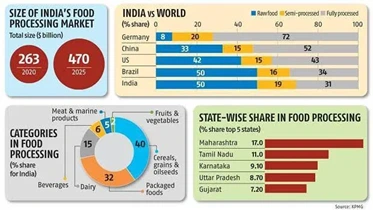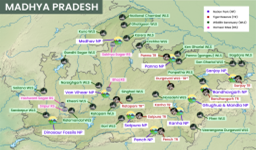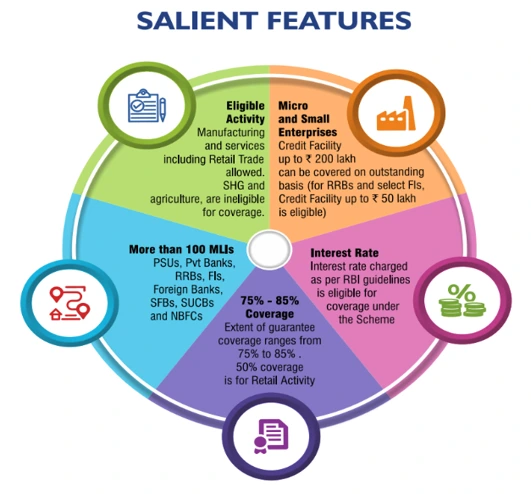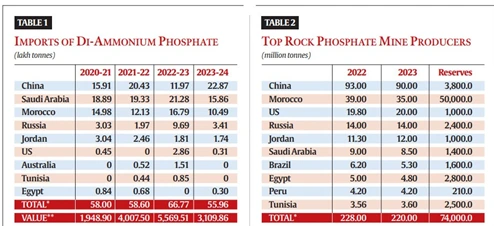Monday, 23rd September 2024
Supreme Court Has Deepened Constitutional Idea
Why in the news ?
- On December 6, 1948, the Constituent Assembly of India debated the right to life and personal liberty under Article 21.
- K. M. Munshi argued for including due process protections, asserting that the right to life and liberty should not be subject to ordinary laws.
Historical debates about due process and personal liberty:
- Philosophical principles of due process
- It ensures that the deprivation of life, liberty, or property follows established legal procedures and prevents unchecked state power.
- In the Indian independence movement, this demand coincided with the desire for individual freedom in a new legal system.
- Munshi’s Argument: Protection from abuse of law
- In the Constituent Assembly, K. M. Munshi recommended the inclusion of due process in Article 21.
- He argued that fundamental rights should not be subordinated to weak laws, and warned that governments without due process could undermine individual liberty by public policy or national security concerns.
- Conflict with due process: Efficiency concerns
- Despite Munshi’s comments, there was considerable objection to due process under Article 21.
- Constitutional Adviser N.K. Dr. Rau and others. B.R. Ambedkar sought to balance individual freedom with the needs of government in a diverse, newly independent society.
The Role of Judicial Interpretation in Upholding Personal Liberty:
- A. K. Gopalan v. State of Madras (1950):
- Article 21 states that no person shall be deprived of life or personal liberty except within the procedure established by law.
- Initially, A.S. This restrictive interpretation prioritized legality over justice, leaving the state more free to enact restrictive laws without regard to individual rights
- Maneka Gandhi and the Union of India (1978):
- The case of the Union of India brought about major changes in constitutional law.
- confiscated Gandhi's passport without specification under the Travel Act, arguing that it violated his personal liberty under article 21.
- The Supreme Court extended the interpretation of Article 21 to require that the procedure should be fair, just and reasonable, coincidental or not. pattern .
- This decision restored due process protections in Indian law, although it lacked the original intent of the Framers.
Article 21 - Promotion of judicial functions and human dignity:
- Francis Corley Mullin v . The Superintendent, Delhi Union Territory (1981)
- The Supreme Court ruled that the right to life under Article 21 includes the right to live with dignity, including the rights necessary to lead a meaningful life.
- The judgment emphasized that personal liberty included not only the freedom to exercise self-restraint, but also personal liberty and privacy.
- Emphasizing that the right to life extended and included more than mere survival quality of life.
- Bandhua Mukti Morcha v. Union of India (1984):
- In this case, the court recognized that the right to life included the right to earn a living. He held that the subsistence necessary for deprivation of dignity was Article 21.
- This interpretation extended Article 21, emphasizing that the State must ensure that citizens can live with dignity and security
- Right to Privacy Judge K.S. Puttaswamy v. Union of India (2017):
- This landmark case recognized that the right to privacy is central to the right to life and personal liberty under Article 21.
- The Supreme Court’s decision appeared in the context of the Aadhaar scheme, forcing progress special mark in the recognition of privacy as a fundamental right.
- Recent Developments: Balancing Securities Law and Individual Liberty
- The Supreme Court's commitment to personal liberty has been challenged by national security laws like the UAPA and PMLA.
- These laws impose strict bail conditions and permit prolonged detention, conflicting with personal liberty rights.
- Nonetheless, the Court has reaffirmed the primacy of Article 21 in several key rulings, protecting individual rights despite these restrictions.
Source: IE
Spike in India’s trade deficit
Why in the news ?
- In the first quarter of 2024-25, momentum slowed, with export values dropping 1.5% in July and further contracting by 9.3% in August, reaching an eight-month low.
- Imports hit a record $64.4 billion in August, leading to a merchandise trade deficit of $29.7 billion, the second highest after October 2023's record $29.9 billion gap.
Reasons behind the triggering of the wider trade deficit:
- Export Contraction Amid Rising Imports:
- India’s exports declined in July-August 2024, falling a whopping 1.5% in July and 9.3% in August.
- Even so, imports grew 7.5% in July and 3.3% in August, pushing the July trade deficit to a nine-month high of $23.5 billion, widening $6.2 billion in August
- Decline in regional manufacturing and major exports:
- Sharp decline in key sectors such as petroleum, minerals and jewelry.
- Oil exports fell by 22.2% in July and 37.6% in August, while jewelry exports fell by more than 20% in both months.
- Growth in key sectors such as pharmaceuticals, electronics and stone and metal products.
- Oil Import Bill and Trade Fraud:
- A fall in oil prices ($6 a barrel) in August led to a 30% drop in India’s imports, dropping them to $11 billion—the lowest level in three years in
- Due to lower exports of precious stones and jewelry, with some contribution from various goods and electronics.
- Gold Import Surge:
- India's gold imports rose to a record $10.1 billion in August, more than double the July figure and in sharp contrast to July's 10.7% decline.
- The gold import duty reduction in the budget (15% to 6%), higher gold prices and festive collections by the country’s jewelry industry.
Risk associated with significant commercial capital:
- No significant economic risk in the trade crisis:
- India’s high growth rate means that global demand will naturally exceed global export demand.
- Trade deficits are not a concern for a growing and rapidly growing economy, unless there are foreign exchange issues.
- Foreign capital inflows and foreign reserves:
- With the country’s foreign exchange reserves as on August 2, 2024 reaching a record high of $675 billion
- This is enough to cover 11.6 months of imports, although it could decrease slightly if imports remain above $60 billion.
- Outsourcing provides stability
- India’s services exports, which rose by more than 10% from April to August 2024, provide some stability and an additional buffer against widening trade deficits.
Foreign trade in goods:
- Global trade prospects for 2024:
- Although global trade is expected to grow faster in 2024 than in 2023, demand remains weak in most developed markets.
- Geopolitical risks, ongoing conflict with the US. upcoming elections, and increased tariffs on Chinese goods create a tough environment for India and other players
- Impact of U.S.-China Trade Tensions:
- As China's domestic economy falters and the U.S. tariffs on Chinese goods rise, China may shift its focus to non-U.S. markets. of, and to dispose of cheaper goods.
- This could have a negative impact on India, especially reducing demand for Chinese imports.
- Oil prices and export concerns:
- Global demand will decline, pushing down oil prices, and affecting India’s oil export prospects.
- While lower oil prices benefit oil importers, India’s oil outlook remains weak and overall worries about global demand continue to rise.
Long-term challenges for India’s export growth:
- India’s goal of increasing industry and exports to $1 trillion by 2030 faces major hurdles.
- Economists highlighted the global economic slowdown, rising tariffs and non-tariff barriers, and new trade policies such as the EU approach to reforming carbon caps and deforestation regulations.
- While short-term opportunities for export growth are possible, the long-term outlook will be difficult.
Source: TH
100 years of establishment of Indian Council
Why in the news ?
- Recently, the President of India, Smt. Droupadi Murmu graced the centenary celebration of the ICAR-National Institute of Secondary Agriculture (NISA) in Ranchi, Jharkhand.
About ICAR- NISA:
- About: ICAR-NISA was established in 1924 as the Indian Institute of Natural Rivers, in Ranchi, Jharkhand. In 2022.
- Rename: It was renamed in 2022 as ICAR-NISA and comes under the Ministry of Agriculture and Farmers’ Welfare.
- Secondary Agriculture
- It includes value addition to primary agricultural products and other agricultural related services such as beekeeping, poultry, agricultural excursions and so on.
- It refers to the practices/methods used to process all agricultural inputs, residues and by-products into value-added products for pharmaceutical, engineering, pharmaceutical and specific food applications.
- Secondary agriculture is a broad term that includes food and non-food production.
- Examples: extraction of vitamins from rice and oil from refined rice, jaggery from sugarcane, cottage scale unit for making jams and pickles.
- Potential Growth:
- Consumers demand value-added products such as ready-to-eat, functional foods.
- The importance of unconventional agro-organic regeneration equipment.
- Large quantities of agricultural byproducts.
- Significance of Secondary Agriculture:
- Environmental sustainability: Crop residues and agricultural wastes can be put to better use than burned or thrown away.
- Farmer income: Positive economic returns from such activities Beekeeping, lakh culture and so on.
- Added Value: Increases retention time and increases overall productivity.
- Cottage Industry: Promotes agricultural/rural cottage industries and the use of technology.
- Challenges of secondary agriculture:
- From high-value companies agricultural residues/products such as active pharmaceuticals and others are in its infancy.
- Small landowner mobilization in India the rest of the vegetables are hard.
- Lack of research on appropriate technology.
- Lack of awareness about agricultural production processes Garbage is produced by farmers.
Source: PIB
PM Mega Integrated Textile Regions and Apparel
Why in the news ?
- Recently, Prime Minister Narendra Modi laid the foundation stone for the PM Mega Integrated Textile Regions and Apparel Park (PM MITRA) in Maharashtra's Amravati.
About PM MITRA Park Scheme:
- About:
- In 2021, the Ministry of Textiles announced 7 PM- MITRA Parks states.
- States:
- Covered under it include Tamil Nadu, Telangana, Gujarat, Karnataka, Madhya Pradesh , Uttar Pradesh and Maharashtra.
- Vision: It is driven by the 5F vision i.e., - Farm to Fiber to Factory to Fashion to Foreign.
- Objective: To develop large scale integrated modern technology systems for the entire textile value chain industry.
- Period: 2021-22 to 2027-2
- Department of Use: General utility vehicles belonging to the Central and State Governments.
- Eligibility and Selection Criteria: Contiguous and unencumbered land of at least 1000 acres, national clothing and technical design.
- MITRA gardens can be greenfield or brownfield.
- Implementation:
- A Special Purpose Vehicle owned by the Centre and State Government will be set up for each park which will oversee the implementation of the project.
- The Ministry of Textiles will provide financial support in the form of Development Capital Support upto Rs 500 crore per park to the park SPV.
- A Competitive Incentive Support (CIS) upto Rs 300 crore per park to the units in PM MITRA Park shall also be provided to incentivise speedy implementation.
- Potential Benefits of PM Mitra Park Scheme:
- Reducing export costs/increasing competitiveness: To carve 1 from processing/dyeing and printing to garment manufacturing place.
- Business generation: Each park is set to cost 1 lakh direct jobs and 200,000 jobs indirectly.
- Achieving SDG goals: e.g., SDG 9 (“Building resilient systems to promote sustainable technology and encourage innovation”).
- Other initiatives taken for textiles Industry:
- Scheme for Capacity Building in Textile Sector (SAMARTH), addresses the skilled manpower requirement across the textile sector.
- Amended Technology Up-gradation Fund Scheme (ATUFS), provides credit linked Capital Investment
- Subsidy (CIS) to units for purchase of benchmarked machinery in different segments of Textile Sectors.
- National Technical Textiles Mission Production Linked Incentive (PLI) Scheme for Textiles
Source: ET
Pradhan Mantri Vishwakarma Scheme
Why in the news ?
- Recently, the Prime Minister emphasized that the Prime Minister’s Vishwakarma Yojana embodies the spirit of ‘sammanah, samarthah, samridhi’ (respect, power, prosperity).
About Pradhan Mantri Vishwakarma Yojana:
- Objective: To provide comprehensive support to artisans and artisans engaged in traditional industries to strengthen and enhance their livelihoods.
- Implementation: The scheme is being implemented by micro, small and medium enterprises (MSMEs), with support from state and local government agencies
- Beneficiaries: The scheme targets artisans and artisans working in 18 traditional trades, including carpentry, metalwork, ceramics and tailoring.
Benefits:
- Admission: Artists get PM Vishwakarma certificate and certificate.
- Skills Development: Sponsorship for initial and advanced training.
- Incentive tools: e-vouchers for equipment purchases.
- Credit: Unsecured loans with low interest rates.
- Digital Transaction Incentives: Rewards for Digital Transactions.
- Marketing Support: Assistance with branding, e-commerce and marketing.
- Formalization: Beneficiaries of the MSME ecosystem are brought on board as entrepreneurs.
Source: PIB
Credit Default Swaps
Why in the news ?
- Recently, the Securities and Exchange Board of India (SEBI) announced that mutual funds can now sell credit default swaps (CDS).
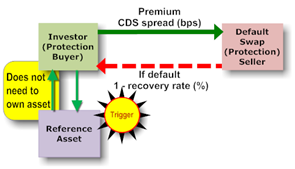
About Credit Default Swaps:
- Allows an investor to swap or offset their credit risk with that of another investor.
- The buyer pays an ongoing premium similar to the payments on an insurance policy.
- The seller agrees to pay the security’s value and interest payments if a default occurs.
- It can be used for speculation, hedging, or as a form of arbitrage.
- Credit default swaps played a role in both the 2008 Great Recession and the 2010 European Sovereign Debt Crisis.
What are Mutual Funds?
- It is a trust that collects money from a number of investors who share a common investment objective and invests the same in equities, bonds, money market instruments and/or other securities.
- The income / gains generated from this collective investment is distributed proportionately amongst the investors after deducting applicable expenses and levies.
Source: TH
Quad Group
Why in the news ?
- Recently, the Prime Minister of India is participating in the fourth Quad Leaders Summit in Wilmington, Delaware in the United State of America (USA).

About the Quad Group:
- Four democracies: India, Australia, US. and Japan, known as the Quadrilateral Security Dialogue (Quad) strategic alliance.
- Aim: To ensure a free and open Indo-Pacific based on the rule of law.
- Objectives: Focuses on maritime security, climate change, investment and technological innovation.
- History: Built for disaster relief in 2004 after the Indian Ocean tsunami. It was formalized in 2007 but stalled due to China’s opposition and India’s reluctance.
- Resurrection: Rejoined in 2017; In 2019, he was promoted to minister.
- Summit: The first virtual summit in March 2021, followed by the first in-person summit in September 2021.
- Structure: There is no formal secretariat or decision-making body, instead it builds on existing agreements between members.
Source: TH
Debt Recovery Tribunals
Why in the news ?
- The Finance Ministry recently directed banks to implement effective monitoring and oversight mechanisms for managing pending cases in Debt Recovery Tribunals (DRTs).
About Debt Recovery Tribunals (DRT):
- Established: Under Debt Recovery due to Banks and Financial Institutions Act, 1993 (DRT Act).
- Action: To enforce the rights of creditors in India and accelerate debt collection.
- Types of Cases Handled:
- Mandate: Handle debt collection disputes from banks and financial institutions, especially for loans above ₹20 lakh.
- Sarfaesi Act, 2002: Banks are allowed to accept secured loans without court intervention. Aggrieved parties may file a Securitization Appeal (SA) with the DRT.
- Structure:
- President: A qualified Chief Justice who is a District Judge appointed by the Central Government.
- Membership: Professional and technical membership appointed by the government.
- Powers under Section 22(2) of the DRT Act:
- Call the person in between and investigate.
- Request documentation and evidence.
- to provide for panels to examine witnesses.
- Review decisions and rule on cases of default or decide ex parte.
- Jurisdiction: DRTs handle debt collection issues in specific geographical jurisdictions for banks and financial institutions.
- Appeal and Enforcement: An appeal against a DRT order can be lodged with the Debt Recovery and Appeal Tribunal (DRAT).
- Current Status: There are 39 DRTs and 5 DRATs all over India, each headed by a Chairman and a Chairman.
Source: TH
India's foreign policy dilemma: Balancing global
Context:
- India, the fifth-largest economy navigating the complexities of international relations, faces the challenge of balancing ambitious global aspirations with pressing domestic needs, a dilemma central to its foreign policy strategy.
India's global ambitions:
- Permanent membership of the United Nations Security Council: India aims for a permanent seat to enhance its influence in global security and international crises.
- Economic and Strategic Influence in the Indo-Pacific: India is expanding its presence in the Indo-Pacific to counter China’s hegemony.
- Leadership in Emerging Economies: India aspires to be a leading voice for emerging and developing countries by representing the Global South in various international forums.
- Meeting transnational: India aims to actively address global issues such as climate change, public health and food security.
- Representation in international financial institutions: India advocates greater decision-making powers in the World Bank and IMF to reflect the interests of developing countries.
- Military and industrial development: Strengthening military and industrial capabilities is essential for India to balance China’s influence in Asia.
- Soft power enhancement: India seeks to promote its cultural heritage and democratic values to enhance global influence.
Challenges to India’s Global Ambitions:
- Economic Constraints:
- India faces significant income disparities and a per capita income of USD 2,500, with a global GDP contribution of only 3.6%.
- This limits its influence compared to major economies like the U.S., EU, and China. Additionally, China's investments in neighboring countries challenge India's regional influence.
- Domestic Development Priorities: Pressing issues such as poverty alleviation and job creation require substantial resources, complicating the balance between domestic needs and international commitments.
- Regional Security Concerns: Ongoing tensions with Pakistan and border disputes with China divert focus from global engagement, compounded by instability in neighboring countries like Bangladesh and Myanmar.
- Competition with China: China's superior economic and military capabilities pose a significant challenge, requiring India to navigate cooperation and competition in international forums.
- Limited Power Projection Capabilities: Despite military modernization, India lags in advanced military technology and force projection compared to major powers.
- Balancing Multiple Strategic Partnerships: Managing diverse relationships with the U.S., Russia, Japan, and Europe while maintaining strategic autonomy is complex, as seen in India's stance on Russia's invasion of Ukraine.
Steps India to achieve its global ambitions:
- Permanent membership of the UN Security Council:
- India uses its G20 Presidency to participate in BRICS-like forums to achieve consensus on UN reforms with Japan and Germany as members of the 2+2 ministers in discussion in November 2023 .
- Economic reforms and policies:
- Initiatives like "Make in India" boost domestic manufacturing, while initiatives like "Digital India" promote digital transformation.
- Countries like Bhutan, France, Mauritius, Nepal, Singapore, Sri Lanka and the UAE currently accept UPI payments.
- Diplomatic outreach:
- By adopting a "multiple alignment" strategy, India engages with global power.
- During COVID-19, it provided vaccination assistance through "Vaccine Friendship" and humanitarian assistance through Operation Sadbhav (hurricane relief) and Dost (Turkey-Syria).
- Quad and I2U2’s active participation reflects a strategic commitment to collaboration to strengthen ties with the Indian diaspora.
- Increased Regional Impact:
- As a founding member of the Indo-Pacific Economic Framework (IPEF) launched in May 2022, India through the India-Middle East European Economic Corridor (IMEC), 2022.
- Launched in September 2023 in, improved communication and marketing There is a purpose.
- The "Neighborhood First" program focuses on development assistance to immediate neighbors, while the "Act East" and "Look West" programs build links between Southeast Asians and West Asians the depth of the
- Leadership in Emerging Economies:
- India hosted the Third Voice of the Global South Summit in March 2024, which highlighted priorities such as climate change and health Under the chairmanship of the G20, India for Africa The United Nations successfully entered as a permanent G20 member.
- Addressing transnational challenges:
- At COP28 in December 2023, India announced renewable energy targets and launched the Green Credit Initiative.
- The International Solar Association promotes global solar energy.
- India has also provided "Made-in-India" COVID-19 vaccines to more than 150 countries and has played a key role in the September 2023 G20 declaration on food security.
- Representatives in the International Monetary Fund:
- India recommends reforms in the World Bank and IMF, and urges increased voting rights for developing countries.
- Its rate of IMF Special Drawing Rights to 2.75%, and makes 8th with a large share.
- Military and technological advances:
- India test-fired the Agni-4 intercontinental ballistic missile, enhancing its intercept capability.
- In 2023-2024, defense exports reached a record Rs 21,083 crore, a growth of 32.5%.
- The successful Chandrayaan-3 mission showcased advanced space capabilities, as India promotes itself as a hub for IT services and AI.
- Soft Empowerment:
- The International Yoga Day serves as a platform for cultural exchange, while Indian cinema is recognized at major international film festivals, thereby promoting India’s rich heritage across the globe
Way forward for India’s global ambitions:
- Strengthening the foundation of the house:
- Develop policies that increase GDP growth while tackling income inequality through investment in education, health and infrastructure.
- Focus on creating employment opportunities, especially for young people, through skills development and support for small and medium enterprises (SMEs).
- Freedom of communication:
- Maintain strategic independence while deepening partnerships with like-minded countries to safeguard India’s interests.
- Continue diplomatic efforts to support India’s membership in the UN Permanent Security Council and use the G20 and BRICS to promote its cause.
- Use India’s position to bridge the divide between developed and developing countries and promote inclusive dialogue
- Department of Finance and Strategy:
- Expand trade and defense partnerships in the Indo-Pacific and increase participation in regional initiatives such as IPEF to counter China’s influence.
- Increase investment in R&D in emerging technologies (e.g. AI and renewable energy) to increase competitiveness. The recent partnership with Singapore in the semiconductor ecosystem is a step in this direction.
- Promoting soft power and cultural change:
- Promote cultural exchange through events such as International Yoga Day, sister city events and global Indian art and film screenings to promote goodwill.
- Use the Indian diaspora as cultural ambassadors to strengthen ties with host countries.
- Addressing global challenges:
- Advance the goal of sustainable development and climate action by putting India at the forefront of renewable energy and climate resilience.
- Build on initiatives like Vaccine Friendship to strengthen global health partnerships and enhance India’s role in international public health governance.
- Strengthening community relationships:
- Continue to refine the "community first" strategy to promote stability and cooperation through development assistance and joint ventures.
- revitalizing regional forums such as SAARC and exploring new avenues of cooperation in South Asia to enhance connectivity and trade.
- To enhance relations with West Asian countries through trade, defense and cultural exchanges in order to develop comprehensive regional policies.
|
UPSC Civil Services Examination, Previous Year Question (PYQ) Prelims: Q:1 Consider the following statements: (2016)
Which of the statements given above is/are correct?
Ans: (a) Mains: Q1. Discuss the impediments India is facing in its pursuit of a permanent seat in UN Security Council.(2015) |
Source: BS
Share the article
Edukemy’s Current Affairs Quiz is published with multiple choice questions for UPSC exams
MCQ
Get Latest Updates on Offers, Event dates, and free Mentorship sessions.

Get in touch with our Expert Academic Counsellors 👋
FAQs
UPSC Daily Current Affairs focuses on learning current events on a daily basis. An aspirant needs to study regular and updated information about current events, news, and relevant topics that are important for UPSC aspirants. It covers national and international affairs, government policies, socio-economic issues, science and technology advancements, and more.
UPSC Daily Current Affairs provides aspirants with a concise and comprehensive overview of the latest happenings and developments across various fields. It helps aspirants stay updated with current affairs and provides them with valuable insights and analysis, which are essential for answering questions in the UPSC examinations. It enhances their knowledge, analytical skills, and ability to connect current affairs with the UPSC syllabus.
UPSC Daily Current Affairs covers a wide range of topics, including politics, economics, science and technology, environment, social issues, governance, international relations, and more. It offers news summaries, in-depth analyses, editorials, opinion pieces, and relevant study materials. It also provides practice questions and quizzes to help aspirants test their understanding of current affairs.
Edukemy's UPSC Daily Current Affairs can be accessed through:
- UPSC Daily Current Affairs can be accessed through Current Affairs tab at the top of the Main Page of Edukemy.
- Edukemy Mobile app: The Daily Current Affairs can also be access through Edukemy Mobile App.
- Social media: Follow Edukemy’s official social media accounts or pages that provide UPSC Daily Current Affairs updates, including Facebook, Twitter, or Telegram channels.

